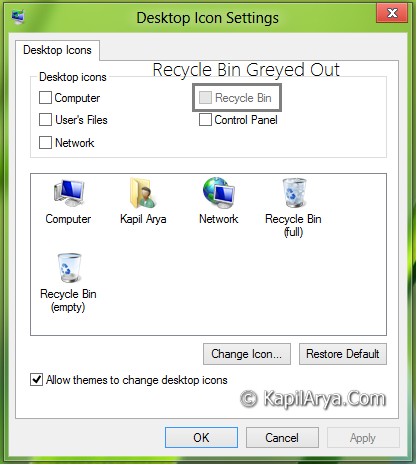
To resolve this all you need to do is to go by the steps below:ġ. If you are signed in to Windows with Tablet Mode, it will not show any of the desktop icons. Microsoft designed Windows 10 in a way that it can work on desktop as well as on mobile devices. Make Sure You are not Signed in to Tablet Mode: Now go to your desktop, you will be able to find Recycle Bin on your Windows 10 machine.

If not, then check mark that box to make Recycle Bin icon available on Desktop.ĥ. Make sure that box adjacent to Recycle Bin is check marked. This will open the Desktop Icon Settings window. Now in the right pane, click on Desktop icon settings under Related Settings.Ĥ. In the Settings window select Personalization option and select Themes in the left pane.ģ. (The Shift-key trick works for every method of deleting a file: pressing the Delete key, choosing Delete from the shortcut menu, and so on.2. Doing so-and then clicking Yes in the confirmation box-deletes the file permanently, skipping its layover in the Recycle Bin. The trick to skipping the Recycle Bin on a one-shot basis is to press the Shift key while you delete a file. If that suggestion seems too extreme, consider this safety/convenience compromise: Leave the Recycle Bin safety net in place most of the time, but bypass the Recycle Bin on command only when it seems appropriate.


(Especially if you also turn off the confirmation dialog box shown in Figure 4-9-then you’re really living dangerously.) To set this up, turn on the “Do not move files to the Recycle Bin” checkbox (shown in Figure 4-9). Furthermore, you’ll reclaim disk space instantly when you press the Delete key to vaporize a highlighted file or folder.
If you, a person of steely nerve and perfect judgment, never delete a file in error, then your files can bypass the Recycle Bin entirely when you delete them.


 0 kommentar(er)
0 kommentar(er)
